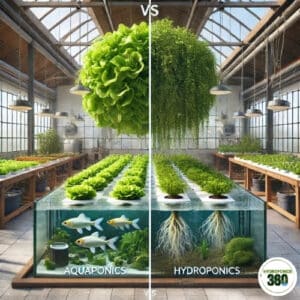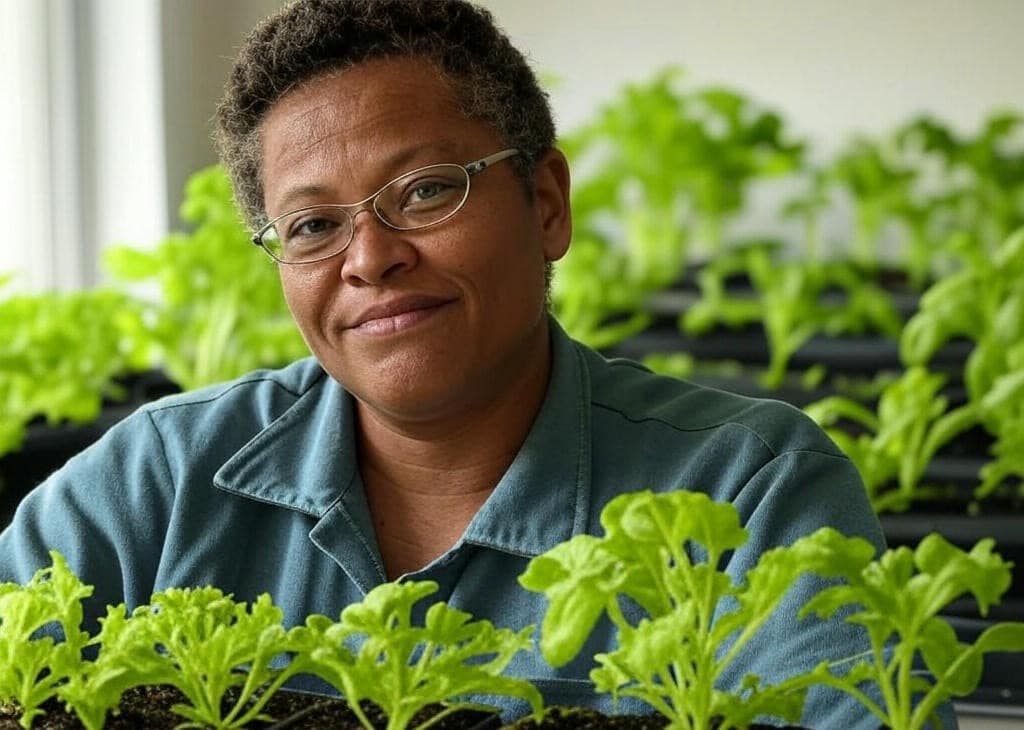Fish or No Fish? Aquaponics vs Hydroponics Debate
Table Of Content
Growing plants without soil sounds amazing until you learn it’s an existing reality for thousands of backyards, rooftops, and greenhouses across the country.
The under-the-radar agriculture movement at its center still has a burning question: between aquaponics and hydroponics, which system makes more sense, and for whom?
The answer is not an across-the-board reply. Both retain water and release the soil, but they differ fundamentally in entirely different philosophies. One relies on chemical accuracy. The other imitates nature’s less-than-perfect perfection.
Let’s break it down as though one has actually built both systems, experienced failure, and benefited from the triumph.

The Systems, Revealed
Hydroponics is growing plants within rich nutritional water. Measured minerals, pH, and calibrated and sterilized growing substrates. It’s efficient, precise, and quite effective. You give the plant what it needs, and it responds quite rapidly.
Aquaponics, however, turns your grow bed into an ecosystem. Fish waste is fertilizer. Decomposing bacteria convert the ammonia they produce into nitrates. Plants use the nutrients and clarify the water, which recirculates back to the fish. No bottled nutrients, no waste. It’s aquaculture and agriculture: two systems and one circle.
Choosing Hydroponics: Where Control Matters Most
Hydroponics is appealing to growers who are looking for speed, predictability, and control. You dictate every variable, from light to fertilizer strength, and what you get is consistent. Leafy greens look fantastic. Herbs fare well, too. Even fruiting crops can be accomplished if properly cared for.
What sets hydroponics apart is its relatively low complexity on a biological level. No fish to care for, no microbes to calibrate. It’s an input-equal-output system. If fussing over EC meters and making fine-tune adjustments between exact proportions of nutrients is your thing, then hydroponics will be richly rewarding and produce explosive growth and verdant yields.
It can also be scaled successfully into urban environments. You can have small systems on kitchen counters or balconies, and full-scale hydroponic farms are opening within warehouses everywhere.
Why Aquaponics Is Captivating a Cult Following
While hydroponics is clinical and hygienic, aquaponics is ecological and natural. It’s more dynamic than hydroponics. You’re not simply raising plants because you’re managing an ecosystem of fish, microbes, and roots.
The learning curve is greater. You will be learning fish care, nitrogen cycling, and water chemistry. The payoff, though, is sustainability. There will be no need for synthetic nutrients. There are no nutrients that are wasted. A natural balance system that can be kept for years under proper care.
And, naturally, there’s the particularly rewarding part about picking a tomato off the vine while your fish swim beneath. A closed-loop system is appealing to the environmentally conscious. It’s more ecosystem design than farming, after all.
Let’s Talk Setup
Hydroponic systems are simple enough to set up. Reservoir, pump, and grow tray, and you’re halfway there. Nutrient solutions, naturally, and maybe an air stone to oxygenate the roots. It’s modular and scalable.
Aquaponics takes more time. A fish tank is only the beginning. You also need a grow bed, a biofilter, and a way to circulate water between them. All are necessary, and balance is everything. Cut corners on one side and the whole system can collapse.
In spite of that, once it was set up, everything worked amazingly well. The bacteria do their thing. The fish are maintained by the plants. You add water, feed the fish, and harvest the tanks and beds.
The Money Question: What’s Cheaper in the Long Term?
Start-up capital is less for hydroponics than for buying animals. You’re buying equipment, not animals. Nutrient solutions can be bought commercially and are relatively cheap, especially for small businesses.
Aquaponics can cost a lot quickly. Thanks, plumbing, filtration, everything adds up quickly. However, you also eliminate the cost of continually adding nutrients. Once you have cycled your system, the cost to operate it becomes less. You’re producing two sources of food in one system.
Another reason is maintenance. Minding and adjusting inputs is hydroponics. Aquaponics is stability, the keep-smiling-aquatic-alien-ecosystem-minding.
Which System Develops What Better
Both systems excel at leafy greens, lettuce, kale, and basil. Hydroponics has a chance to excel based on speed due to precise nutrient delivery. Tomatoes and peppers, fruit producers, thrive equally well under both, but aquaponics may require supplemental nutrients depending on your fish stock.
The real difference lies in system resiliency. It will be disastrous when a pump fails or pH changes under hydroponics. Aquaponics is protected by biology; it takes a little while to react, so you can make corrections.
Eco Factor That You Should Know
For a reduced carbon footprint, turn to aquaponics. No artificial inputs are necessary. No discharge of wastewater. It is a closed system. You tend the fish, and the fish tend the plants. That’s it.
Hydroponics is yet more water-conserving than soil farming. It’s tidy, smaller-scale, and less land-hungry. It continues to suffer from the fact that it relies on chemical fertilizers, which are environmentally problematic.
Both systems are equally bad for the world. One is copying nature, and the other is outsmarting nature, so it’s up to you.
Failures, Freakouts, and Repairs
Nutrient imbalance can easily get out of hand under hydroponics. Root rot can destroy an entire crop. It’s only as effective as your monitoring equipment.
Aquaponics, however, can collapse if the fish perish or the bacteria fail to metabolize the ammonia. A temperature drop can kill everything off. You also get more warning signs: fish don’t eat, plants turn yellow gradually, and filters clog. Either way, this is not a plug-and-play situation. Mistakes become lessons, though, after some time. You’ll know your system like a veteran pilot knows the wind.
FAQs
Is aquaponics better than hydroponics?
It depends on your priorities. Hydroponics is faster and more predictable. Aquaponics is more sustainable and offers dual yields. One isn’t inherently better; they just serve different goals.
Can I convert a hydroponic system into aquaponics?
Not easily. You’ll need to add biological filtration and establish a stable fish population. It’s doable but requires planning.
Which system is better for beginners?
Hydroponics, hands down. Fewer variables, faster results. Aquaponics is rewarding but more complex.
Table Of Content
